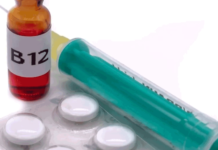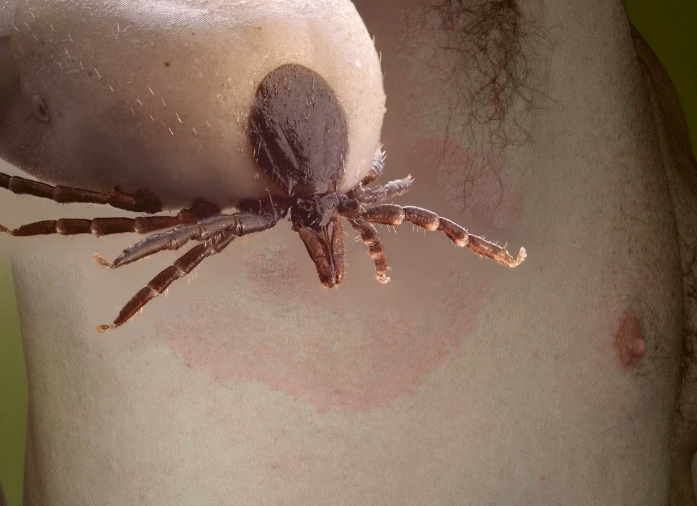Lyme disease is a growing concern for many people, especially those who spend time outdoors in wooded or grassy areas. This tick-borne illness has garnered significant attention due to its wide range of symptoms and potential long-term effects if left untreated. Understanding what Lyme disease is, how it’s caused, its symptoms, and the available treatments can empower individuals to recognize it early and seek proper care. In this article, we’ll dive into everything you need to know about Lyme disease, from its meaning and causative agent to its vectors, testing, and potential cures.
What Is Lyme Disease? Understanding Its Meaning
Lyme disease, named after the town of Lyme, Connecticut, where it was first identified in the 1970s, is an infectious disease that affects thousands of people each year. It’s primarily transmitted to humans through the bite of infected blacklegged ticks, commonly known as deer ticks. These tiny parasites thrive in specific environments, making certain regions—like the northeastern United States, parts of the Midwest, and some areas of Europe and Canada—hotspots for Lyme disease cases. While it’s not contagious between humans, its prevalence has made it a public health issue worth understanding.
Lyme Disease Is Caused By: The Causative Agent
So, what exactly is Lyme disease caused by? The causative agent of Lyme disease is a spiral-shaped bacterium called Borrelia burgdorferi. In rare cases, other species like Borrelia mayonii can also be responsible, though B. burgdorferi is the most common culprit in North America. This bacterium belongs to the spirochete family, known for its ability to evade the immune system and persist in the body if not addressed promptly. The bacteria are carried by ticks, which acquire them by feeding on infected animals, such as mice, deer, or birds, before passing them on to humans through a bite.
The Lyme Disease Vector: How It Spreads
The Lyme disease vector, the blacklegged tick (Ixodes scapularis in the eastern U.S. and Ixodes pacificus on the West Coast), plays a critical role in the disease’s transmission. These ticks have a complex life cycle, progressing from larvae to nymphs to adults, and they can pick up Borrelia at any stage if they feed on an infected host. Nymphs, being tiny and often unnoticed, are particularly responsible for human infections, especially during spring and summer when outdoor activities peak. For the bacteria to transfer, the tick typically needs to be attached for 36 to 48 hours, though shorter durations can sometimes suffice.
Recognizing Lyme Disease Symptoms
One of the first questions people ask when they suspect Lyme disease is about its symptoms. Lyme disease symptoms can vary widely and often mimic other illnesses, which makes it tricky to diagnose without proper testing. In its early stages, Lyme disease often presents with flu-like symptoms: fever, chills, fatigue, headache, muscle and joint aches, and swollen lymph nodes. However, one hallmark sign sets it apart—a distinctive rash known as erythema migrans. This Lyme disease rash appears in about 70-80% of cases, typically within 3 to 30 days after a tick bite. It often starts as a small red spot at the bite site and expands into a bull’s-eye pattern, though its appearance can differ from person to person.
The Lyme Disease Rash: A Key Indicator
The Lyme disease rash is a critical clue for many, but not everyone develops it—or notices it. Its bull’s-eye appearance is iconic, but variations like solid red patches or irregular shapes can occur, and it’s not always itchy or painful. This inconsistency adds to the diagnostic challenge, as some people might dismiss early symptoms as a minor bug bite or allergy. Taking photos of any suspicious rash and noting when it appeared can aid healthcare providers in making an accurate assessment.
Advanced Lyme Disease Symptoms
If Lyme disease progresses untreated, symptoms can become more severe and widespread. Weeks to months after the initial infection, individuals might experience additional rashes, severe joint pain (especially in the knees), neurological problems like facial paralysis (Bell’s palsy), memory issues, or nerve pain. In rare cases, Lyme disease can affect the heart, causing irregular heartbeats or inflammation known as Lyme carditis. These later-stage symptoms underscore why early detection and intervention are so crucial.
How to Test for Lyme Disease
So, how do you confirm Lyme disease? A Lyme disease test is typically the next step when symptoms suggest a possible infection. Diagnosis often begins with a physical exam and a review of the patient’s history, particularly any known tick bites or time spent in endemic areas. Blood tests are commonly used, but they’re not foolproof, especially in the early stages. The two-tiered testing process involves an enzyme-linked immunosorbent assay (ELISA) to detect antibodies against Borrelia, followed by a Western blot test for confirmation if the ELISA is positive. These tests measure the body’s immune response rather than the bacteria itself, so they can sometimes miss early infections or yield false positives if a person was previously exposed.
Lyme Disease Treatment Options
When it comes to Lyme disease treatment, the good news is that early intervention usually leads to a full recovery. Antibiotics are the cornerstone of treatment, with doxycycline, amoxicillin, or cefuroxime being the most commonly prescribed options. For early-stage Lyme disease, a 10- to 21-day course of oral antibiotics is typically sufficient to eliminate the infection and prevent complications. In cases where the disease has spread to the nervous system or heart, intravenous antibiotics like ceftriaxone may be necessary for a few weeks. The key is to start treatment as soon as possible after symptoms appear or a tick bite is confirmed in a high-risk area.
Is There a Lyme Disease Cure?
But is there a Lyme disease cure? For most people, the answer is yes—antibiotics effectively clear the infection when administered early. However, the concept of a “cure” gets murkier for those with lingering symptoms. While some alternative treatments—like long-term antibiotics, herbal remedies, or hyperbaric oxygen therapy—have been proposed, their efficacy lacks robust scientific support. Mainstream medical consensus holds that standard antibiotic regimens are the gold standard, and patients with persistent symptoms may need supportive care to manage pain, fatigue, or cognitive issues rather than additional rounds of antibiotics.
Preventing Lyme Disease: Tips and Strategies
Prevention is another critical piece of the Lyme disease puzzle. Since ticks are the primary vector, avoiding bites is the best defense. This means wearing long sleeves and pants in tick-prone areas, using insect repellents with DEET or permethrin, and checking your body (and pets) for ticks after outdoor activities. Showering within two hours of coming indoors can also help remove unattached ticks. If you find a tick, remove it promptly with fine-tipped tweezers, grasping it close to the skin and pulling straight out to avoid leaving mouthparts behind. Monitoring the bite site for a rash or symptoms in the following weeks is a smart precaution.
The Role of the Lyme Disease Causative Agent
Understanding the Lyme disease causative agent, Borrelia burgdorferi, sheds light on why it’s so resilient. Spirochetes are masters of survival, capable of hiding in tissues and evading immune detection. This adaptability explains why untreated Lyme disease can progress to chronic stages and why some researchers are exploring new diagnostic tools, like PCR tests that detect bacterial DNA directly. While these advances hold promise, they’re not yet widely available, leaving antibody-based tests as the current standard.
Lyme Disease Vector and Environmental Factors
The role of the Lyme disease vector also ties into broader ecological questions. Climate change and habitat shifts are expanding tick ranges, bringing Lyme disease to new areas. Warmer winters allow ticks to survive year-round, while deforestation and suburban sprawl increase human-tick encounters. Public health efforts are ramping up to educate people about these risks, but personal vigilance remains essential. Simple habits—like landscaping yards to reduce tick habitats or supporting wildlife that prey on ticks—can make a difference.
Final Thoughts on Lyme Disease
For those worried about Lyme disease meaning in their lives, it’s worth noting that while the disease can be serious, it’s rarely fatal with proper care. Fatalities linked to Lyme carditis or other complications are exceedingly rare, and most people recover fully with treatment. Still, the fear of chronic symptoms drives some to seek answers beyond conventional medicine, fueling online communities and alternative therapy markets. Whether you’re hiking through the woods or reading up from home, staying informed is your best tool against this elusive disease.
Note: Below is the revised content with a disclaimer tailored to emphasize that the information is purely educational and not intended for diagnosis or cure.













